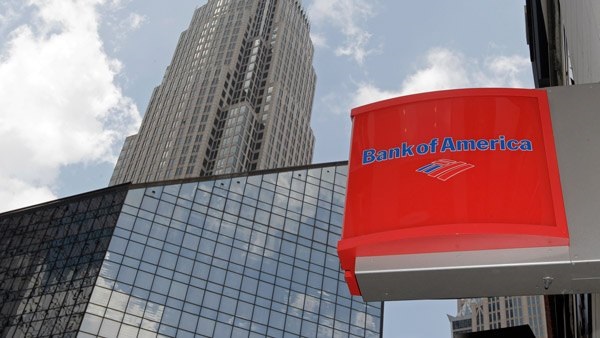 Bank of America headquarters in Charlotte, North Carolina. (Photo: AP)
Bank of America headquarters in Charlotte, North Carolina. (Photo: AP)
Retirement savers in 401(k) plans administered by Bank of America will have access to a new suite of banking and investment benefits.
The U.S.'s second largest bank by assets, according to S&P Global Market Intelligence, also administers 30,000 retirement plans. The 5.6 million participants in the mostly large and mega plans will have access to retail banking options and reduced fees on mortgages if their employers opt to offer the benefits.
Coined Financial Life Benefits, the product launch also includes expanded access to on-site benefits specialists, and the network of Merrill Lynch financial advisors.
"We're already investing heavily in our existing retirement and HSA capabilities and our digital platforms and guidance offering," said John Quinn, head of institutional retirement products and platforms at Bank of America, in an interview.
"Now, a company can work with us to offer employees a broad-based banking and investment program, where by they get access to a range of discounts and advantages," he added.
BofA says no cross-selling conflict with ERISA
Many of the largest banks in the country have spun off their recordkeeping units over the past decade.
Wells Fargo sold its 401(k) administration arm in a deal that closed last year. So did PNC Bank. JP Morgan spun its off in 2014. Charles Schwab still holds its recordkeeping unit, but its retail banking arm, Schwab Bank, has limited retail banking options offered to its brokerage customers.
"We think we are the only recordkeeper that can offer these types of banking benefits," said Quinn.
The novelty of BofA's launch is emblematic of a 401(k) recordkeeping industry that is under considerable fee-compression pressure and an ever-increasing competitive landscape that is forcing providers to distinguish product offerings.
A company spokesperson said the new Financial Life Benefits suite of options is geared toward existing 401(k) corporate clients of the bank.
But the ability to channel discounted retail banking accounts and home loans to the average 401(k) saver is no doubt intended to attract plan sponsors that work with other recordkeepers.
As it stands, Bank of America has corporate banking relationships with 40 percent of the country's mid-sized, large, and mega corporations. By the bank's estimates, 25 percent of the employees in those companies are already retail customers at Bank of America.
For corporations that already tap Bank of America as its recordkeeper, Financial Life Benefits offers the bank a way to grow its mortgage business to millions of potential new retail clients. "We obviously would like to do business with them," said Quinn.
While the extension of reduced mortgages to 401(k) savers may be new to the retirement world, retirement providers' desire to cross-sell product lines is not.
That strategy has come under scrutiny in at least three recent settlements in 403(b) lawsuits.
Of the non-monetary settlement provisions in a lawsuit against Vanderbilt University's defined contribution plan, the sponsor was instructed to inform the plan recordkeeper that it can't use participant data acquired in the course of providing retirement services to "market or sell products or services unrelated to the Plan unless a request for such products is initiated by a plan participant," according to court documents.
The question of whether plan data, or the information recordkeepers collect on retirement savers, is considered a "plan asset" is an emerging legal question under the Employee Retirement Income Security Act.
ERISA prohibits "any transfer to, or use by or for the benefit of a party in interest, of any assets of a plan," the statute says.
The answer is far from settled. But Quinn said Bank of America has set up its Financial Life Benefits suite so that it is not in conflict with ERISA.
"Everything is optional. Companies are under no obligation to bundle the offerings. They can pick the product options they want. There is no connection between the Financial Life Benefits suite and enrolling in a 401(k) plan. They are separate programs with separate contracts," explained Quinn.
"Under the way the program was constructed, there is no ERISA conflict," he added.
Variable take-up rates so far
About 50 corporate plans have already on-boarded the new banking and investing options, said Quinn.
Roughly 20 percent of the participants are already Bank of America retail clients. Those that opt in get free daily banking, and access to reduced mortgage rates, if they set up a savings account with the bank.
"There has been a bit of variability in the take-up rates so far, but the results have been positive," he said. "It all comes down to how well the sponsor is communicating the program. Some are doing so more effectively than others."
As for the question of data, and whether it may or may not be a plan asset under ERISA, Quinn said implementing Financial Life Benefits does not require new data aggregation or sharing.
"Implementation of the program is extraordinarily simple," said Quinn. "There is no heavy lift for participants or employers."
READ MORE:
© 2025 ALM Global, LLC, All Rights Reserved. Request academic re-use from www.copyright.com. All other uses, submit a request to [email protected]. For more information visit Asset & Logo Licensing.








